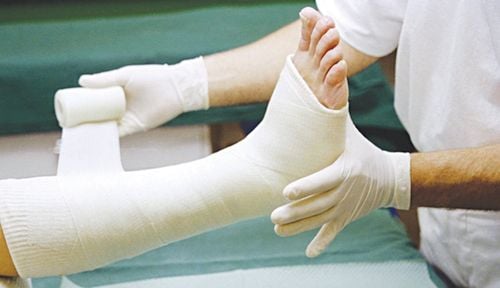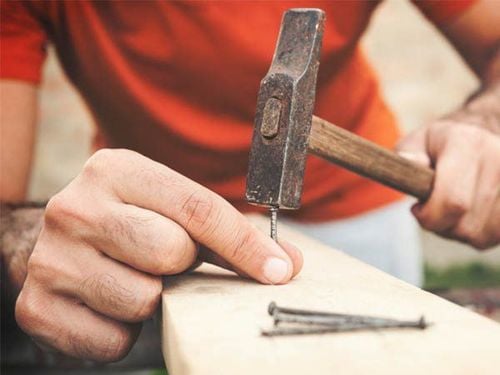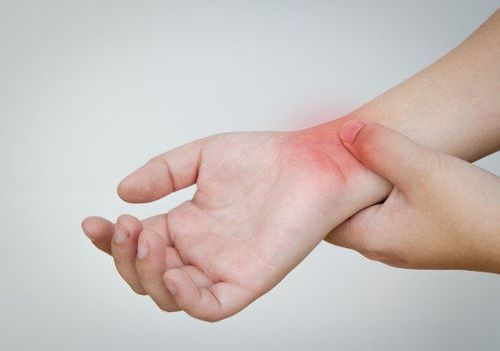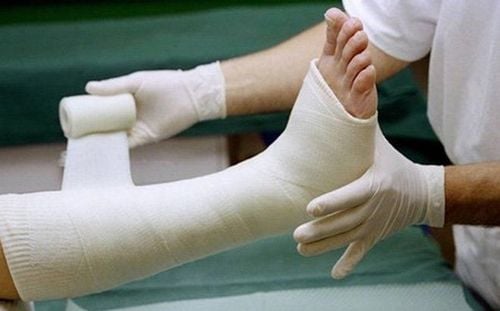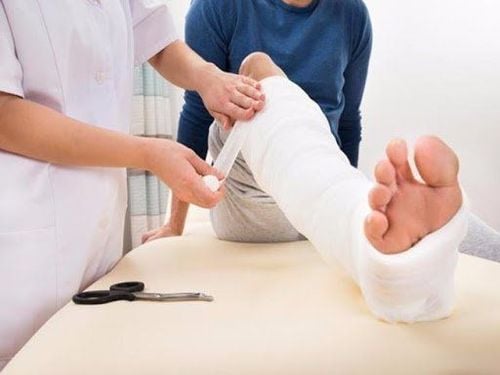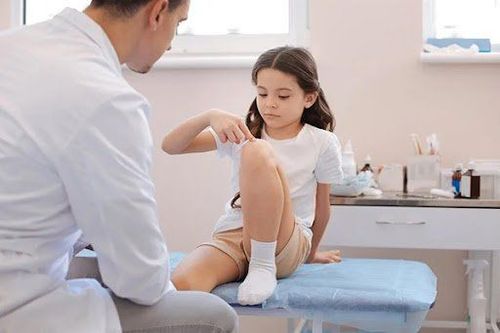This is an automatically translated article.
After a period of cast, splinting, the patient may more or less lose the sensation of movement. Usually, after about 5 to 6 weeks, the fibula will be restored. The ability to recover after fracture of the fibula is also quite easy, even in cases of deviation, fracture of the fibula.
1. How long does it take to learn to walk with a broken fibula?
When a bone breaks without surgical intervention, the healing process takes place in 3 stages:First stage: usually lasts from 1 to 2 months since the manifestation of the fracture. At this time, blood will be generated at the fracture site to bind the broken bone tissue with fibrous fibers. This is called the cal fiber phase. The next stage is 2 to 3 months after the fibula. This is the cartilage regeneration phase. The final stage is the recovery period from the 3rd month onwards. This is when bone tissue begins to form at fracture sites. Usually, after about 5 to 6 weeks, the fibula will be restored. The ability to recover after fracture of the fibula is also quite easy, even in cases of deviation, fracture of the fibula, it will gradually recover. However, it will no longer be as straight as the original, but curved.
Of course, in order for the healing process to happen in both surgery and cast, it is necessary to ensure the principle: steady immobilization, continuous, enough time
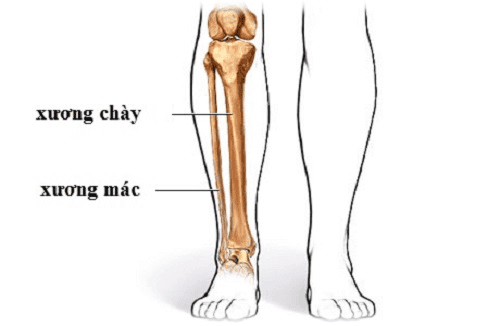
Thông thường thì sau khoảng 5 đến 6 tuần là đoạn xương mác sẽ được phục hồi
2. Can you play soccer with a broken fibula?
When the fibula is broken after 3 months, bone tissue begins to form at the fracture site. Therefore, during this time, it is necessary to apply recovery measures to avoid strong activities such as kicking a soccer ball.Rehabilitation measures include:
Joint movement: Joints immobilized for a long time will become stiff due to shortening of muscles, joint capsule shrinkage, synovial fat hyperplasia, cartilage thinning. Therefore, joint movement is a good way to pump the joint fluid in and out, the joints are nourished and become soft, the speed for one stretch is 45 seconds, each exercise time 10-15 minutes, day 4 - 6 times. You can practice from the 3rd day after surgery or after the cast. Exercise to maintain muscle strength: Exercise to increase muscle tension (the length of the muscle does not change, the joint does not move), and the exercise to contract the muscle (so that the joint moves, the muscle contraction shortens). When the joint is still painful, practice stretching; when the joint is less painful, practice contraction. Learn to walk: Use wooden crutches to learn to walk when the bones are not yet healed. The crossbar on the crutches should not rest on the armpit, but on the side of the chest. Walk straight, eyes looking straight ahead, not looking down at your feet. Shoulders should be level, not high or low. Bring the 2 crutches forward 10 - 30cm in an incremental manner, balance on the handles, then step forward with your good foot, continue with another step. The next stage, using a cane when the bone is almost solid. Many people like to use a cane on the side of their painful leg, which worsens their gait. You have to get used to standing on the cane on the good leg and when the good foot comes out first, the weight on the painful leg and the cane will be borne at the same time. Armpit crutches should not be used because this will make the gait look disabled later on. When the bone is stable and painless at the fracture site, remove the cane and practice walking as usual. Using heat: The effect of using heat is to reduce pain, reduce discomfort, and is beneficial when practicing active movement. Use a hot water pack, apply it to the painful area to practice. Pay attention not to use shortwave heat for the entire limb with nails, the metal steel ring screw splint can heat up, which can damage the organization and easily cause fistula. Practice normal activities: Need to practice doing movements in daily life by going up and down stairs, steps, squatting and standing up. For hand bone injuries, practice grasping, opening the hand (using an egg-shaped stone to grasp), practicing holding a pen and chopsticks, avoiding the hand from being bent or crooked. When there is no more pain, no restriction, this training process will achieve good results. The training period is usually from 6 months to 2 years, depending on the extent of the injury. Massage measures: Should regularly massage the joint fractures. Only gently massage with your hands without using any high oils, alcohol, or massage drugs to massage the joints, because this is likely to cause stiffness and calcification of the joints. When injured, in order to heal quickly, the patient needs to be persistent in exercise, need to combine different exercise measures to return to the original shape.
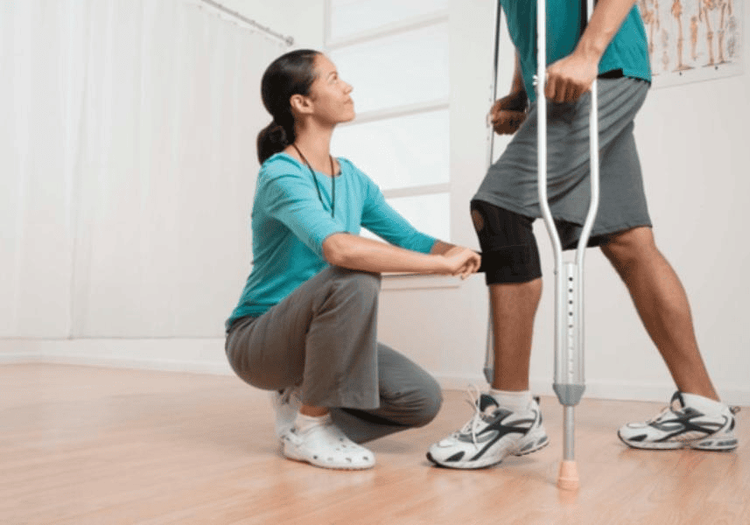
Khi bị chấn thương, để chóng lành, người bệnh cần kiên trì tập luyện




